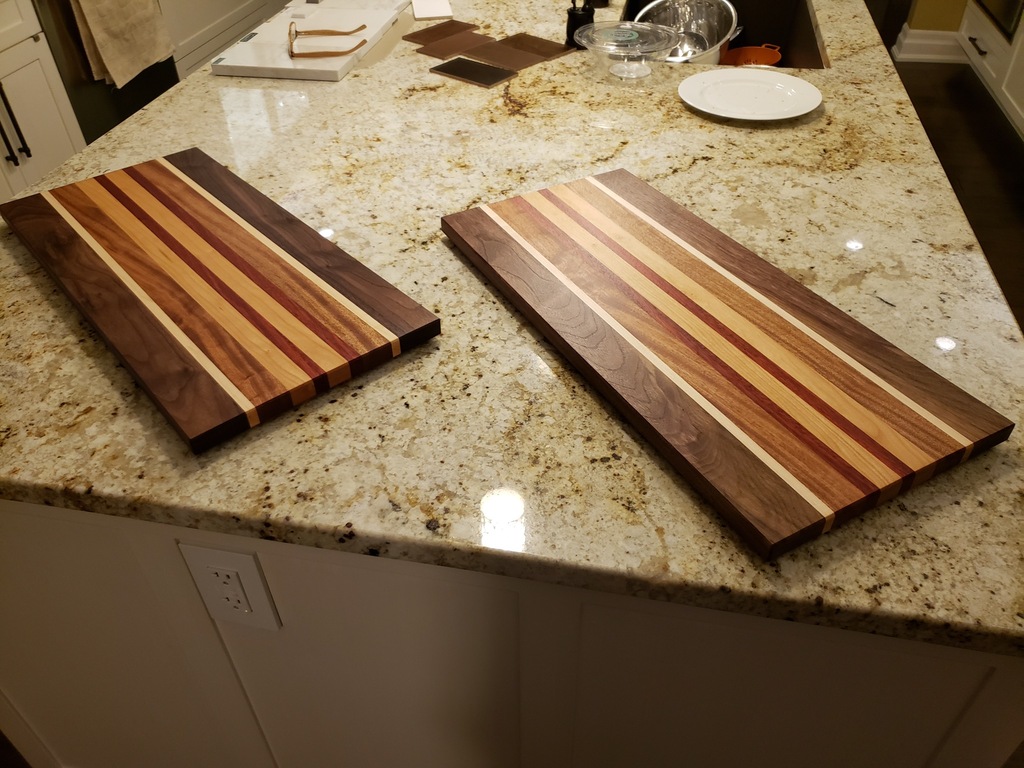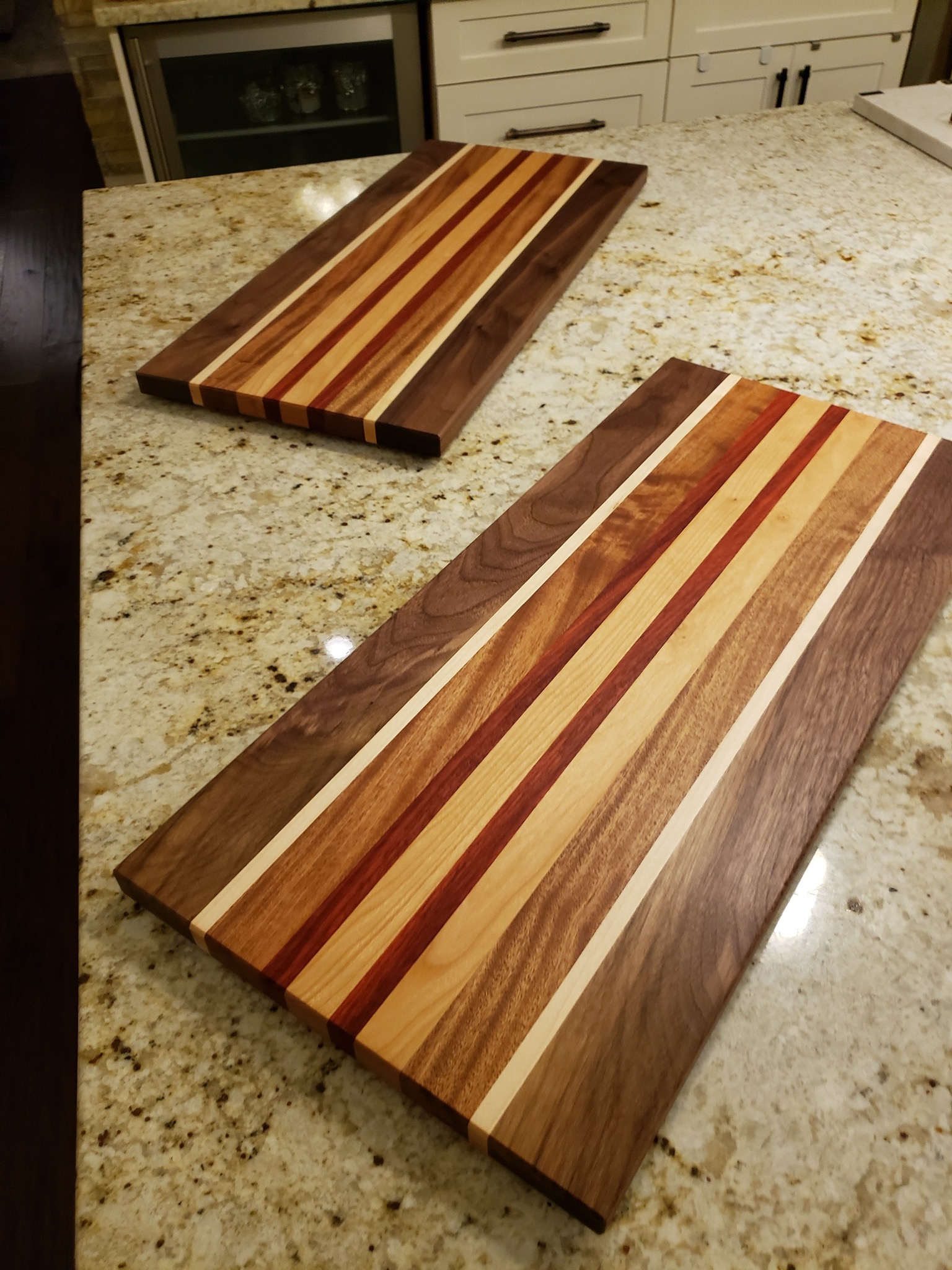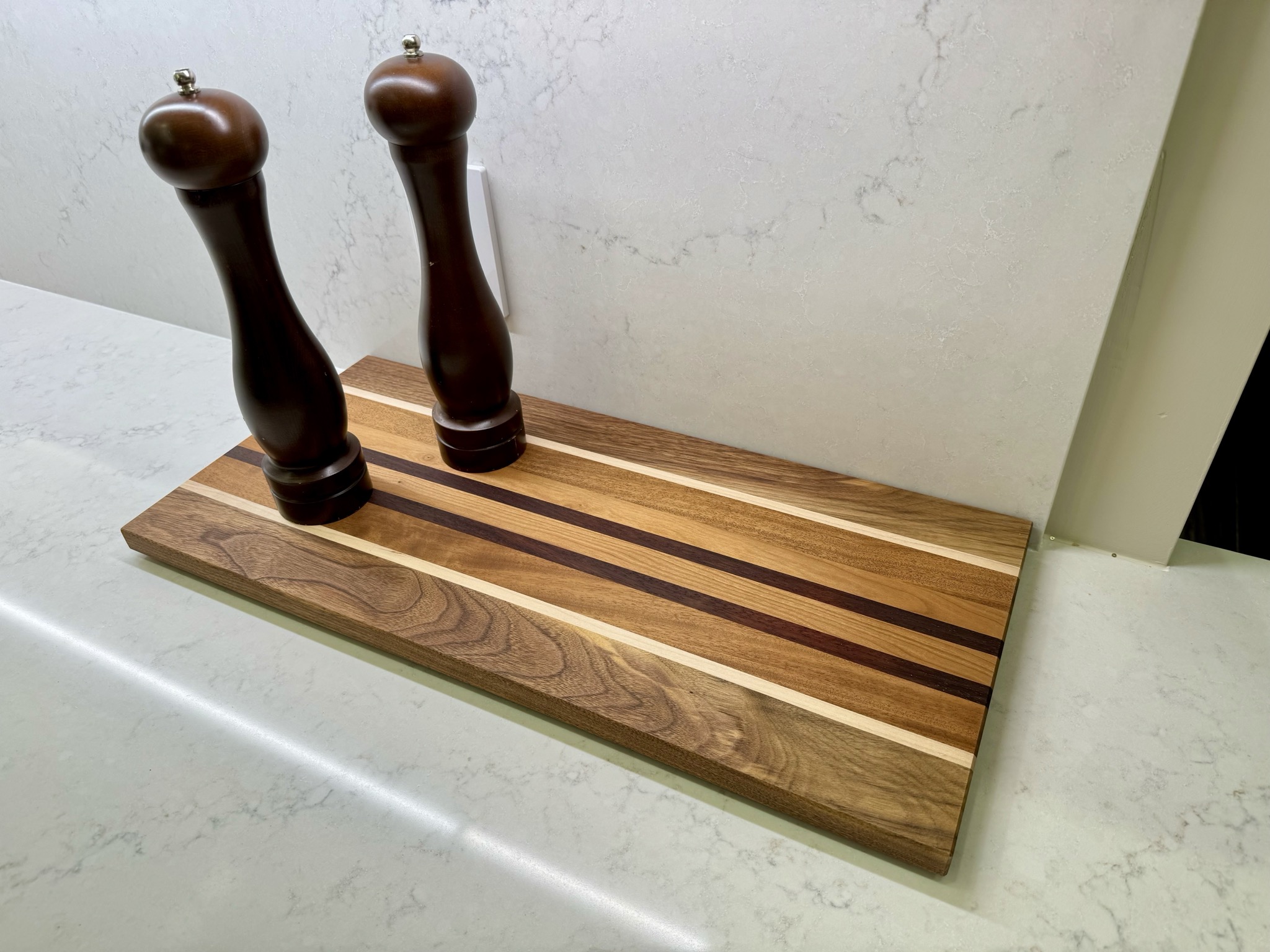Charcuterie Boards
Serving trays made from walnut, maple, and a number exotic African woods
Origins
Ok, so the difference between a charcuterie board and a cutting board, is that a charcuterie board is meant for serving things, not cutting things. Now that we have that out of the way…these are super fun to make. Not too hard to make but they do require a lot of sanding.
Under Construction
In the Sticks
Take a bunch of sticks, glue them together in just the right order, then run them thru the planer to get a start on the smoothing process, then start sanding at 80 grit. I wanted a smooth glossy look, so I sanded all the way to 600 grit.
The thing that makes these look cool is the different woods, and the contrast between them. It has walnut, maple, Sapele, Mahogany, and Padauk. If you are really into the wood types, I have included a way-too-detailed description of each of them below that I pulled from various sources.
It was finished with a food safe product called Honeybees Natural Wood Cream, mostly beeswax. Doesn’t that sound just yummy? The rubber feet and stainless-steel connecting screws were procured from local artisans (Lee Valley and Home Depot respectively).
In Production
Materials
- Walnut: The common walnut, and the black walnut and its allies, are important for their attractive timber, which is hard, dense, tight-grained and polishes to a very smooth finish. The color is dark chocolate or similar in the heartwood changing by a sharp boundary to creamy white in the sapwood. When kiln-dried, walnut wood tends toward a dull brown color, but when air-dried can become a rich purplish-brown. Because of its color, hardness and grain, it is a prized furniture and carving wood.
- Maple: From Eastern Canada, in tree form, hard maple is usually referred to as sugar maple, and is the tree most often tapped for maple syrup. (It’s also the state tree in four different states in the US.). This wood color ranges from nearly white, to an off-white cream color, sometimes with a reddish or golden hue. Also called rock maple, its wood may be fairly considered as the king of the Acer genus. Its wood is stronger, stiffer, harder, and denser than all of the other species of maple commercially available in lumber form. A favorite amongst craftsmen looking for an excellent, brighter material to work with.
- Sapele: From Africa: This heartwood is a golden to dark reddish brown. Color tends to darken with age. Besides the common ribbon pattern seen on quartersawn boards, Sapele is also known for a wide variety of other figured grain patterns, such as: pommele, quilted, mottled, wavy, beeswing, and fiddleback. Sapele is a commonly exported and economically important African wood species. It’s sold both in lumber and veneer form. It is occasionally used as a substitute for Genuine Mahogany, and is sometimes referred to as “Sapele Mahogany.”
- Mahogony: From Africa, the color is variable, ranging from a very pale pink to a deeper reddish brown, sometimes with streaks of medium to dark reddish brown. Color tends to darken with age. Quartersawn surfaces can also exhibit a ribbon-stripe appearance. Comprised of a handful of species from the Khaya genus, all of which are native to Africa. Sometimes lacks the deeper reddish brown color and durability that is common for true mahogany.
- Padauk: From Africa, the wood color can vary, ranging from a pale pinkish orange to a deep brownish red. Most pieces tend to start reddish orange when freshly cut, darkening substantially over time to a reddish/purplish brown (some lighter pieces age to a grayish brown).
Padauk has a very unique reddish orange coloration, and the wood is sometimes referred to by the name Vermillion. This dramatic color darkens to a beautiful deep red-brown. Padauk is moderately heavy, strong, and stiff, with exceptional stability. It’s a popular hardwood among hobbyist woodworkers because of its unique color and versatility.


